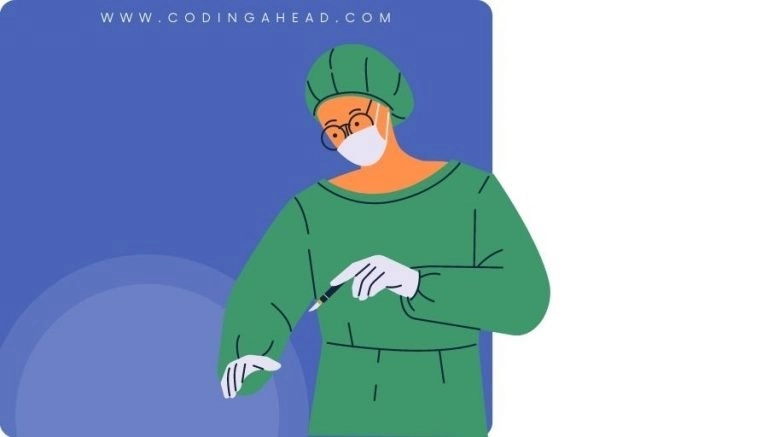How To Use CPT Code 30801
CPT 30801 describes the ablation of the superficial area of the inferior turbinates using various methods such as bipolar cautery, tissue volume reduction, radiofrequency ablation, or somnoplasty. This article will cover the description, official description, procedure, qualifying circumstances, appropriate usage, documentation requirements, billing guidelines, historical information and billing examples.
1. What is CPT Code 30801?
CPT 30801 is used to describe the ablation of the superficial area of the inferior turbinates. This procedure involves the surgical destruction of abnormal tissue or organ growth in the nose. The provider may use methods like bipolar cautery, tissue volume reduction, radiofrequency ablation, or somnoplasty to shrink the superficial surface layer of the inferior turbinates.
2. Official Description
The official description of CPT code 30801 is: ‘Ablation, soft tissue of inferior turbinates, unilateral or bilateral, any method (eg, electrocautery, radiofrequency ablation, or tissue volume reduction); superficial. Please note that for ablation of superior or middle turbinates, a different code should be used (30999).’
3. Procedure
- The provider prepares the patient and administers anesthesia.
- Using methods like bipolar cautery, tissue volume reduction, radiofrequency ablation, or somnoplasty, the provider ablates the superficial area of the inferior turbinates.
- The provider may insert a needle into the front of the tip of the inferior turbinates and pass current through the needles to reduce the hypertrophy of the turbinates.
- After the ablation, the provider removes the needles and completes the procedure.
4. Qualifying circumstances
CPT 30801 is performed on patients with hypertrophy or abnormal increase in the size of the inferior turbinates. The procedure is indicated when the superficial area of the turbinates needs to be ablated to alleviate symptoms or improve airflow. It is important to note that CPT 30801 is specifically for the ablation of the superficial area of the inferior turbinates, and different codes should be used for other turbinates or procedures.
5. When to use CPT code 30801
CPT code 30801 should be used when the provider performs the ablation of the superficial area of the inferior turbinates using any of the specified methods. It is important to accurately document the procedure and ensure that it meets the criteria outlined in the code description.
6. Documentation requirements
To support a claim for CPT 30801, the provider must document the following information:
- Patient’s diagnosis and the need for ablation of the superficial area of the inferior turbinates
- Specific method used for the ablation (bipolar cautery, tissue volume reduction, radiofrequency ablation, or somnoplasty)
- Date and details of the procedure, including any complications or additional procedures performed
- Signature of the provider performing the ablation
7. Billing guidelines
When billing for CPT 30801, ensure that the procedure meets the criteria outlined in the code description. It is important to accurately document the procedure and use the appropriate code for the specific turbinates or procedures performed. If there is no specific code available, report an unlisted procedure code. Review the coding guidelines and consult with the payer for any specific billing requirements or modifiers that may be necessary.
8. Historical information
CPT 30801 was added to the Current Procedural Terminology system on January 1, 1992. Since then, there have been several code changes and updates to ensure accurate reporting of the procedure.
9. Examples
- A provider performs bipolar cautery to ablate the superficial area of the inferior turbinates in a patient with nasal obstruction.
- Using radiofrequency ablation, a provider shrinks the superficial surface layer of the inferior turbinates in a patient with chronic rhinitis.
- During somnoplasty, a provider surgically destroys abnormal tissue in the superficial area of the inferior turbinates to alleviate snoring in a patient.
- Using tissue volume reduction, a provider reduces the size of the inferior turbinates in a patient with nasal congestion.
- A provider performs ablation of the superficial area of the inferior turbinates using a combination of methods to improve airflow in a patient with chronic sinusitis.
- Using bipolar cautery, a provider ablates the superficial area of the inferior turbinates to treat epistaxis in a patient.
- A provider performs radiofrequency ablation to shrink the superficial surface layer of the inferior turbinates in a patient with allergic rhinitis.
- During somnoplasty, a provider surgically destroys abnormal tissue in the superficial area of the inferior turbinates to alleviate sleep apnea symptoms in a patient.
- Using tissue volume reduction, a provider reduces the size of the inferior turbinates in a patient with nasal polyps.
- A provider performs ablation of the superficial area of the inferior turbinates using a combination of methods to improve nasal airflow in a patient with deviated septum.



